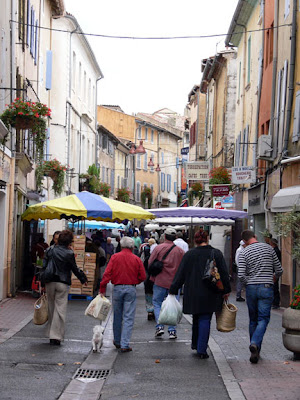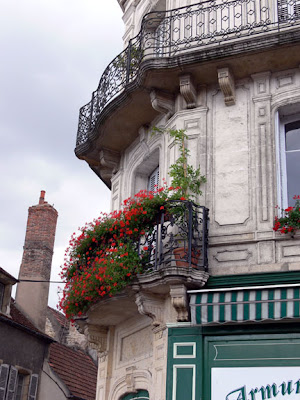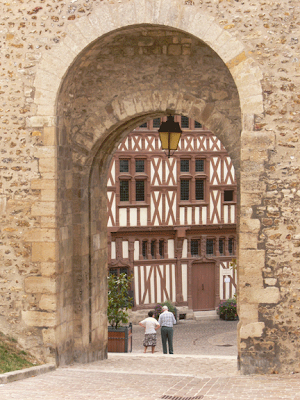







Picture 1: Inside Cathedrale St. Etienne looking forward
Picture 2: Approaching Auxerre in the late afternoon
Picture 3: L'horlage, or clock tower, in the old town.
Picture 4: Auxerre at night
Picture 5: Cathedrale St. Etienne outside
Picture 6: The cathedral inside, showing center of the basilica, or center arch
Picture 7: Side street in Auxerre
Picture 8: Main street in Auxerre
Auxerre was our third stop on the river/canal. We spent 2 nights here. It has a population of about 35,000. It's major attractions are the Cathedral St. Etienne, an active church, and the Abbey of St. Germaine, now a museum. In the approach photo above the abbey is the large building in the lower left, along with the tower of St. John, part of the abbey. The cathedral is the higher building to the left. In the night view both are lit but seen from the opposite end of town where we tied up to the shore.
We tied up on the south end of town near the bridge of Paul Bert. When I say we tied up I mean we drove two metal stakes into the bank with a 2 lb hammer in front of and behind the boat and tied our lines to them. There was a marina across the river but we would have rafted up to another boat that may have been rafted up to yet another boat. By tying up on the town side (West) we didn't have electricity or water, which we didn't need, and we had the sea wall to ourselves just meters from town.
Auxerre has been settled since Celtic times. An archelogical dig in the Abbey of St. Germaine shows the Romans built atop Celtic sites and the Frence built atop Roman sites. We saw that in several other places throughout France. The abbey was originally a basilica above the tomb of St. Germaine, a 5th centry bishop, who is credited with making Auxerre an important religious center. He is still buried in the crypts below along with other 1,000 year old crypts. Forget what I said about St. Nicholas before. He is important because he is the patron saint of travelers and mariners and the forestiers, or log cutters that floated their wood downstream to Paris mostly lived in this area.
The Cathedral was first built in 900 A.D. but burned several times in the first 150 years. Apparently every thing worked out after that and this huge Gothic cathedral dominates the skyline. It did suffer damage from the Hugenots in the 1200s. There is a 70 minute sound and light show here from June thru Sept but since it started at 9:30 us old folks couldn't make it.
There are two large museums in town, one of which was closed to set up a new exhibit. The other Mike and I didn't go to but Goerge and Carolyn did. What I found the most interesting was how buildings orginally built 1200 years ago where still being utilized for all sorts of enterprises, including computer stores. We tear down buildings because they are dangerous after 50 years. Maybe if we built them of stone instead they would last longer.
The most colorful tourist site is the clock tower, or Tour de L'Horloge. It is in the old town and was built in 1483 as part of the fortifications. The clock faces came along in the 17th century. There is a sun hand show the time of day, a moon hand that takes 29.5 days to rotate. Most of the old cities we visited had a Place de L'Horloge. Handy in the medieval ages, since watches hadn't been invented yet.
Only two more medieval cities to go before we move on the Provence.




















































